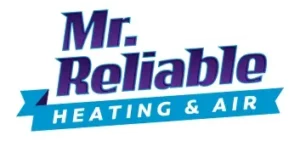allergy or indoor air quality affecting you?
Winter can be a challenging time for many people, especially those who suffer from seasonal allergies. The cold weather leads to more time spent indoors, where poor air quality can exacerbate allergy symptoms. In this article, we will explore the common symptoms of winter allergies and how they differ from the effects of poor indoor air quality. We’ll also discuss how winter weather affects indoor air quality, when to consider getting an indoor air quality test, and why the colder months can make indoor air quality worse. We’ll examine the sources of pollutants in the home, the effects of poor indoor air quality, and provide practical tips for reducing allergens and improving air quality during the winter season. If you’re looking for ways to alleviate your winter allergies or improve the air you breathe indoors, this article will provide valuable insights and actionable solutions.
Key Takeaways:
Winter can exacerbate allergies and worsen indoor air quality due to increased time spent indoors and the presence of common household pollutants.
Symptoms of poor indoor air quality include respiratory issues, headaches, and allergies, making it difficult to distinguish between allergies and poor air quality.
To improve indoor air quality in winter, regularly open windows, clean air ducts and filters, and keep surfaces and carpets clean. Use cooking vents to reduce pollutants.
Is It Winter Allergies or Poor Indoor Air Quality?
During the winter season, individuals often experience a range of symptoms that may be attributed to allergies or poor indoor air quality, leading to concerns about the potential causes and effective solutions.
Indoor air quality can significantly impact health, especially during the winter when people spend more time indoors due to harsh weather conditions. Common symptoms of poor indoor air quality include coughing, sneezing, fatigue, and exacerbated asthma or allergies. It’s crucial to differentiate between seasonal allergies and poor indoor air quality, as the latter can be caused by various air pollutants such as pollen, mold, pet dander, and indoor chemicals. Addressing the root cause, proper ventilation, and air purifiers are essential to alleviate these issues and promote better respiratory health.
Winter Allergies
Winter allergies encompass a variety of seasonal reactions that individuals experience due to specific triggers present during the colder months, often leading to respiratory discomfort and other related symptoms.
Common Seasonal Allergies
Common seasonal allergies during winter may include reactions to pollen, molds, and indoor allergens, manifesting in symptoms such as sneezing, congestion, and respiratory distress, impacting overall indoor air quality.
Winter is not just about cold temperatures; it’s also a time when allergens can wreak havoc on indoor air quality. Pollen from certain trees and plants can trigger allergic reactions, while indoor molds thrive in the damp conditions caused by heating systems. Dust mites and pet dander, common indoor allergens, can exacerbate symptoms as people spend more time indoors. Individuals with seasonal allergies may experience itchy eyes, a runny nose, or worsening asthma during winter. The impact on respiratory health can be significant, affecting daily activities and sleep patterns.
Symptoms of Poor Indoor Air Quality
Poor indoor air quality, particularly in winter, can lead to a variety of symptoms such as aggravated respiratory issues, increased fatigue, and heightened allergic reactions, necessitating a focus on effective improvement strategies.
How Winter Affects Indoor Air Quality
The winter season can significantly impact indoor air quality due to reduced ventilation, increased presence of mold and dust mites, and potential issues related to carbon monoxide and HVAC system performance, necessitating proactive measures to mitigate these effects.
When to Get an Indoor Air Quality Test
It is advisable to consider an indoor air quality test when experiencing persistent respiratory issues, unexplained health symptoms, or concerns about potential pollutant sources, as it can provide valuable insights into the environmental conditions within the living space.
Is It Allergies or Poor Air Quality?
Determining whether the observed symptoms are due to allergies or poor air quality involves a comprehensive assessment of environmental factors, individual health history, and potential allergen exposure, requiring a nuanced approach to differentiation and mitigation.
Why Winter Makes Indoor Air Quality Worse
Winter exacerbates indoor air quality issues due to reduced ventilation, heightened pollutant sources, and specific seasonal factors such as mold-prone areas, necessitating targeted strategies to mitigate these adverse effects during the colder months.
Pollutant Sources in the Home
NoneNone
Common Household Pollutants
Common household pollutants encompass a range of substances and particles that can compromise indoor air quality, necessitating diligent cleaning, filtration, and ventilation measures to mitigate their impact on respiratory health and overall well-being.
These pollutants can include volatile organic compounds (VOCs), such as formaldehyde from furniture and cleaning products, as well as particulate matter from dust, pet dander, and pollen. Common pollutants may also consist of tobacco smoke, mold spores, and chemicals emitted from cooking activities.
To address these environmental concerns, it is essential to implement effective cleaning, purification, and air quality improvement strategies. This can involve using air purifiers with HEPA filters, regularly vacuuming and dusting, and ensuring adequate ventilation in the living spaces.
Effects of Poor Indoor Air Quality
Poor indoor air quality can lead to a range of adverse effects on respiratory health, overall well-being, and cognitive function, highlighting the critical importance of proactive measures to address and improve environmental conditions within living spaces.
Exposure to pollutants such as mold, dust mites, pet dander, and volatile organic compounds (VOCs) can exacerbate allergies, asthma, and other respiratory conditions, making it essential to prioritize air purification and quality improvement. Research suggests that poor indoor air quality can impact cognitive performance and mental clarity, affecting productivity and overall cognitive well-being.
Therefore, implementing effective air filtration systems, proper ventilation, and minimizing sources of indoor pollution are crucial steps towards creating a healthier indoor environment, supporting both physical and cognitive wellness.
How to Improve Indoor Air Quality
Improving indoor air quality involves a combination of measures such as ventilation enhancement, effective purification, and targeted use of air quality improvement products to mitigate pollutant levels and enhance the overall environmental conditions.
Enhancing ventilation can be achieved through the installation of exhaust fans, air vents, and the strategic placement of indoor plants, which naturally purify the air.
Effective purification methods encompass utilizing air purifiers with HEPA filters, regular cleaning and maintenance of HVAC systems, and minimizing the use of synthetic fragrances and aerosol sprays.
Opting for non-toxic cleaning and household products can significantly reduce the release of harmful chemicals into the indoor air environment, promoting a healthier living space.
Tips to Reduce Allergens and Improve Air Quality in Winter
Open a Window
Opening a window during winter can facilitate improved ventilation and air circulation, helping to reduce the concentration of indoor air pollutants and allergens, thereby contributing to a healthier indoor environment.
Through the introduction of fresh outdoor air, the indoor environment can be refreshed, reducing stuffiness and the accumulation of airborne particles. This can alleviate symptoms associated with poor air quality, such as headaches and respiratory irritation. Moreover, winter sunlight can penetrate through open windows, providing natural warmth and potentially reducing the need for excessive heating. Proper ventilation can prevent the buildup of excess humidity, reducing the risk of mold and mildew growth, which are common issues in sealed environments during winter.
Frequently Change the Filter of Your HVAC System
Regularly changing the filters of HVAC systems in winter is crucial to ensure effective air purification and pollutant removal, safeguarding indoor air quality and supporting respiratory health throughout the season.
When the temperature drops and people spend more time indoors, HVAC systems play a crucial role in maintaining a comfortable and healthy environment. Dirty filters can impede their performance, leading to compromised air quality. By regularly replacing the filters, you help the system to efficiently capture dust, pollen, mold spores, and other pollutants, preventing them from circulating in your home. This not only reduces respiratory issues but also promotes a healthier living space for you and your family.
Keep Surfaces Clean and Tidy
Maintaining clean and tidy surfaces in winter contributes to reduced indoor air pollutants and allergens, fostering a healthier indoor environment and minimizing potential respiratory irritants throughout the season.
Regular cleaning of surfaces such as floors, carpets, and furniture helps to control the accumulation of dust, pet dander, and other particulate matter, which can significantly impact the quality of indoor air. Surface cleanliness plays a crucial role in reducing the presence of common allergens, including mold spores and dust mites, thereby alleviating allergic reactions for occupants.
Keep Rugs and Carpets Cleaned, Too
Regular cleaning of rugs and carpets in winter is essential to minimize the accumulation of indoor air pollutants, maintaining better air quality and reducing potential respiratory triggers within the living space.
During winter, the indoor environment can become a haven for various pollutants such as dust, mold, pet dander, and pollen, which get trapped in rugs and carpets. These pollutants, if not regularly removed, can significantly degrade indoor air quality and contribute to respiratory issues.
Clean rugs and carpets act as effective filters by trapping and immobilizing pollutants, preventing them from being stirred up and circulated into the air. This is crucial for controlling indoor air quality and ensuring a healthier living space during the winter months.
Use Cooking Vents
Utilizing cooking vents during winter helps to mitigate the impact of indoor pollutants generated during food preparation, contributing to improved indoor air quality and reduced respiratory irritants within the home environment.
The use of cooking vents plays a crucial role in maintaining a healthier living space, especially during winter when windows and doors are often closed to keep in warmth. When cooking, harmful particles and gases can be released into the indoor air, leading to increased levels of pollutants like carbon monoxide, nitrogen dioxide, and particulate matter. The venting system helps to expel these pollutants outside, preventing them from accumulating and compromising indoor air quality. This is particularly beneficial for individuals with respiratory conditions such as asthma and allergies, as reduced exposure to airborne irritants can alleviate symptoms and improve overall well-being.
Frequently Asked Questions
Is it Winter Allergies or Poor Indoor Air Quality?
1. What are the common symptoms of both winter allergies and poor indoor air quality?
The common symptoms of both winter allergies and poor indoor air quality include sneezing, coughing, itchy and watery eyes, runny nose, and congestion.
2. How can I tell if my symptoms are caused by winter allergies or poor indoor air quality?
It can be difficult to distinguish between the two, but if your symptoms improve when you go outside or in a different location, it is likely due to poor indoor air quality. If your symptoms persist regardless of location, it may be winter allergies.
3. What are some common allergens that can trigger winter allergies or poor indoor air quality?
Common allergens that can trigger both conditions include mold, dust mites, pet dander, and pollen.
4. Can winter allergies be treated differently than poor indoor air quality?
Yes, winter allergies can be treated with over-the-counter or prescription medications, while poor indoor air quality can be improved by cleaning and ventilating your home and using air purifiers.
5. What are some steps I can take to improve indoor air quality during the winter?
To improve indoor air quality during the winter, make sure to regularly clean and vacuum your home, use air purifiers, and open windows for ventilation when possible.
6. When should I seek medical advice for my symptoms?
If your symptoms are severe or persistent, it is best to seek medical advice from a doctor. They can help determine the cause of your symptoms and provide proper treatment.



